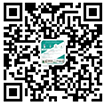
Management and maintenance of clean room
1, strictly control the number of people entering the clean room, and determine the number of operators in the cleanroom by the clean room full-time management and the person in charge of the enterprise.
It must be strictly controlled as soon as it is agreed upon; strictly control the maintenance of the temporary access to the clean room, the inspectors and other personnel, such as the visitors. The temporary entry must apply for the application, the approval procedure and the entry and exit sign.
2, the following personnel are not allowed to enter the clean room:
(1) skin has scorching, stripping, trauma and inflammation, and pruritus.
(2) excessive nose excretion;
(3) patients with cold, cough, frostbite, eczema and other diseases.
(4) excessive scalp and hair are bad habits such as rubbing the skin, picking the nostrils and scratching the head.
(5) no cosmetics, nail polish or clothes without cleaning clothes were removed according to regulations, and those who did not scrape their nails in time should be scratching.
3, the cleanroom staff should be regularly assessed and trained according to the regulations, and the temporary entry personnel should be supervised and recorded.
4. Staff entering the clean room are not allowed to bring in the following items:
(1) all kinds of materials, equipment and instruments that are not processed according to the regulations;
Paper (including hard paper and recording paper) and pens (including pencils, pens, ink, rubber, etc.);
The personal belongings of the staff, such as watches, cosmetics, toilet paper, purses, keys, decorations, food, cigarettes, lighters, matches, etc.
5. The staff of the clean room need to know:
Personnel entering the clean room shall strictly carry out the personal purification system, route and procedures, and no one may change with the child. In clean rooms, clothing, hats and shoes must be made according to regulations.
When the workers work in the clean room, the operation should be light, the operation rules are strictly carried out, the running and jumping, no unnecessary movements are not allowed, and the dust and the big action are not made.
(3) in order not to interfere with airflow, no items should be placed on the upstream side of the operation area. Production operations should generally be carried out on the clean workbench or upstream of the airflow.
(4) it is not allowed to bring articles that are not related to production and easy to produce dust into clean rooms.
Strictly prohibit smoking, eating and non productive activities in clean rooms.
In the biological clean room, especially in the biosafety lab, after the operation is completed, first take off the protective clothing, and then wash hands, shower, wash the face and brush your teeth and so on, and do other things.
6. In order to keep the cleanliness of the cleanroom clean, the cleanliness of the cleanroom personnel should be minimized.
1. All personal clothing items should be put in the designated cabinet, and the makeup should be removed and changed into the designated clothes. The strippers must be stripped according to the order of air cleanliness and put in the required wardrobe.
2. Before going into the strip room, put the slippers and canvas shoes in the shoe cabinet.
Wash your hands with a hand washing device in the bathroom. The supply of hand washer is a clean detergent and clean water that is suitable for the air cleanliness level of the clean area. The switch of the hand washer valve should be tread type.
First wash with clean detergent, then rinse with clean water. After washing, use automatic hand dryer to dry. To protect the skin, the prescribed balsam can be erased after drying. Hand is a medium of cross contamination, which should be washed regularly.
Do not touch highly purified products and high purified packaging materials by hand. Wear gloves and fingernails according to regulations.
(4) personnel enter the clean room, first of all, the clean working clothes are taken out of the personal cleaning work clothes special cabinet or the reception area. If the clean work clothes are not opened, they should be carefully cut and packed to take out garments and not to be covered with packaging materials.
When dressing, do not make the clothes touch the floor, the table, the chair and so on. Do not sell the dirty sleeves and the hem of the trouser legs. The posture should keep upright. The clothes should be dressed in the upper and lower order, and the special dressing table must be set when necessary.
5. When wearing a hood and hat, cover your hair completely, head tightly wrapped in the hood until the zipper mouth of the uniform clean work clothes.
When you wear shoes, you should tightly wrap the trouser legs in the shoe covers.
When the shower room is provided, the cleaning room should be drenched according to the regulations.
7. The matters to be paid attention to when the clean room personnel withdraw:
In order to prevent cross contamination of clean rooms caused by re entry and round-trip operations, personnel should exit the cleanroom in the prescribed order in the course of operation and operation.
(1) before leaving the dressing area, you must not take off the clean work clothes and go into the dressing room to remove the clean room shoes first and put them in the required places. Wash hands before taking off shoes and remove the shoes before removing the cap and put them in the required place.
(2) do not touch the floor, table and other articles when cleaning the work clothes. They are usually removed from the bottom and hanged in the required premises with hangers.
(3) after removing the clean work clothes, it is still necessary to enter the clean room order in order to enter the clean room again.
4. No air shower is required when leaving the clean room.
(5) do not wear clean work clothes to the lavatory (except for clean toilets).
In the biological clean room, especially in the biological safety laboratory, after the operation is finished, first take off the protective clothing and other laboratory special underwear (take out the laboratory before the sterilization treatment).
Then wash your hands, shower, wash your face and so on. Before washing your hands, you can't go out of the lab, smoke, eat, go to the toilet, and the watch, such as your watch, should not be worn before hand washing, even if it is used.
Rubber gloves should also be washed after operation, because gloves may have holes, cracks, or fingernails that may cause intrusion.




